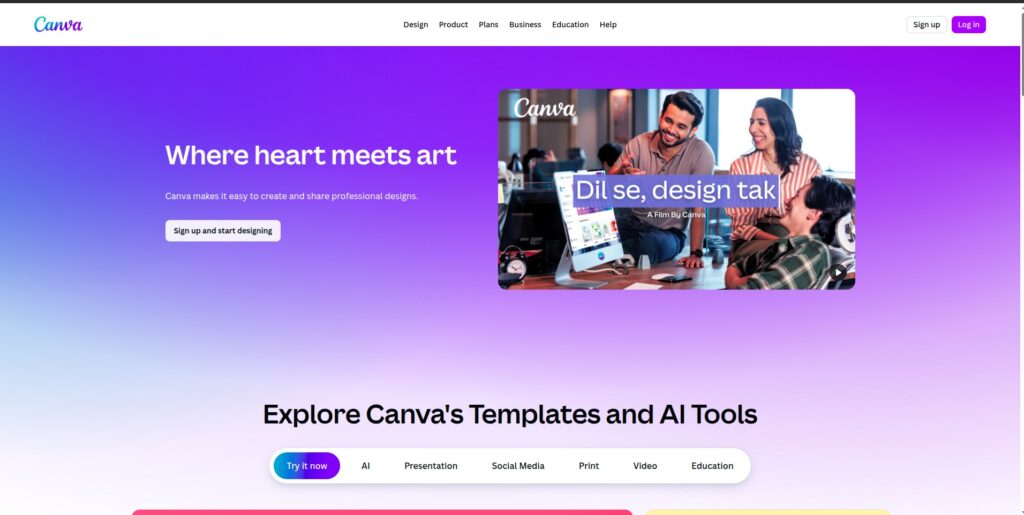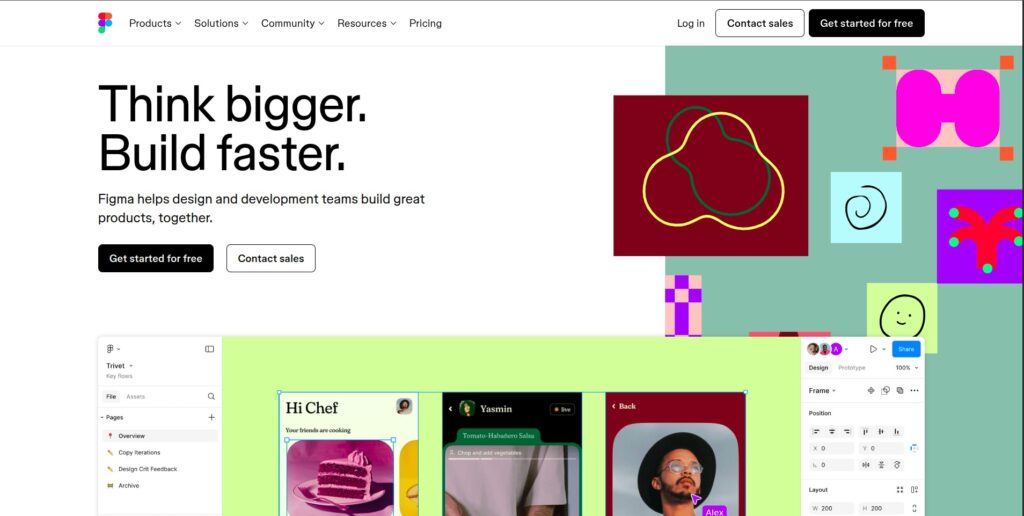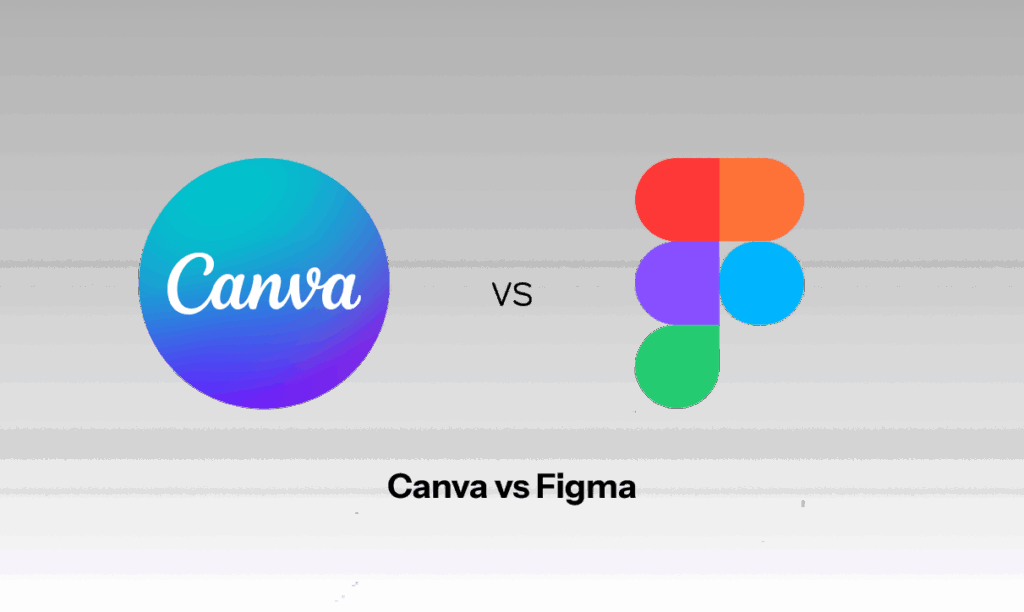
Canva vs Figma (2025): The Ultimate Comparison Guide
Canva vs Figma (2025): The Ultimate Comparison Guide
Published on: October 3, 2025
Struggling to choose between Canva and Figma? Our 2025 comparison reveals key differences in pricing, features, and ideal use cases. Discover which platform saves time, money, and frustration for YOUR specific needs. Make an informed decision today!
Before we begin on Canva vs Figma, let’s understand what Canva and Figma do and how they differ from each other. Canva and Figma represent two fundamentally different approaches to design. Canva empowers non-designers with user-friendly templates, while Figma offers professional-grade design tools. This comprehensive guide examines every aspect of both platforms to help you make the perfect choice for your needs.
Understanding the Core Philosophies

What is Canva?
Canva represents a democratisation of design, enabling users without formal training to create professional-looking visuals. Essentially, it functions as a drag-and-drop graphic design platform with an extensive library of templates.

What is Figma?
Conversely, Figma operates as a professional interface design tool built for collaboration. It serves digital product teams creating websites, apps, and complex design systems.
Detailed Feature Comparison

Design Capabilities
Canva’s Strengths:
- Intuitive drag-and-drop interface
- Massive library of templates (100,000+)
- Built-in stock photography and elements
- Magic Studio AI tools for automated design
- Brand kit functionality for consistency
Figma’s Advantages:
- Vector editing precision
- Advanced prototyping with animations
- Component-based design systems
- Developer handoff features
- Plugin ecosystem for extended functionality
Collaboration Features
Canva Collaboration:
- Real-time co-editing
- Commenting and annotation
- Team folders and permissions
- Presentation mode with live participation
Figma Collaboration:
- Multiplayer cursor visibility
- Version history and branching
- Team libraries for design systems
- Developer inspection mode
User Experience & Learning Curve Comparison
| Aspect | Canva | Figma |
|---|---|---|
| Learning Curve | Very gentle, minimal training needed | Steep, requires design fundamentals |
| Onboarding Time | 1-2 hours for basic proficiency | 1-2 weeks for comfortable usage |
| Interface Complexity | Simple, intuitive drag-and-drop | Complex with multiple panels and tools |
| Best For Beginners | ✅ Excellent for non-designers | ❌ Challenging without design background |
| Template Availability | 100,000+ ready-to-use templates | Limited starter templates |
| Guidance & Tutorials | Extensive built-in tutorials | Community tutorials and documentation |
Feature & Capability Comparison
| Feature Category | Canva | Figma |
|---|---|---|
| Design Tools | Basic vector editing, drag-and-drop | Advanced vector editing, pen tools |
| Prototyping | Basic page linking | Advanced interactive prototypes |
| Collaboration | Real-time editing, comments | Multiplayer mode, version history |
| Assets Library | Extensive built-in stock resources | Limited, relies on plugins and imports |
| AI Capabilities | Magic Studio AI tools | Basic AI features in development |
| Mobile App | Full-featured mobile editor | Viewer and basic editing only |
Pricing Structure Comparison (2025)
| Plan Type | Canva | Figma |
|---|---|---|
| Free Plan | Basic features, limited templates | 3 Figma + 3 FigJam files |
| Individual Pro | $12.99/month | $12/editor/month |
| Team Plan | $14.99/user/month | $45/editor/month |
| Enterprise | Custom pricing | $75/editor/month |
| Annual Savings | 16% with annual billing | 20% with annual billing |
| Free Trial | 30-day pro trial | No time limit on the free plan |
Pros and Cons Analysis
Canva Pros and Cons
| Pros ✅ | Cons ❌ |
|---|---|
| Extremely user-friendly | It can feel restrictive for designers |
| Fast design creation | Template dependency |
| All-in-one platform | Less precision control |
| Massive template library | Can feel restrictive for designers |
| Excellent for non-designers | Limited prototyping capabilities |
| Strong brand management | Less suitable for complex products |
| Affordable pricing | Limited customisation options |
Figma Pros and Cons
| Pros ✅ | Cons ❌ |
|---|---|
| Professional-grade tools | Steep learning curve |
| Excellent collaboration | Overkill for simple designs |
| Precise vector editing | Limited built-in assets |
| Advanced prototyping | Requires design knowledge |
| Strong developer handoff | Can be expensive for teams |
| Scalable for large projects | Mobile experience limited |
| Plugin ecosystem | Steeper initial time investment |
Ideal Use Cases Comparison
| Use Case | Recommended Tool | Reason |
|---|---|---|
| Social Media Graphics | Canva | Quick templates, right dimensions |
| Marketing Materials | Canva | Brand kits, easy collaboration |
| UI/UX Design | Figma | Precision, prototyping, handoff |
| Website Design | Figma | Component systems, responsiveness |
| Presentations | Canva | Templates, easy editing |
| Print Materials | Both | Canva for simplicity, Figma for precision |
| Team Collaboration | Figma | Superior multiplayer features |
Integration & Ecosystem Comparison
| Integration Type | Canva | Figma |
|---|---|---|
| Popular Integrations | Google Drive, Dropbox, social platforms | Slack, Jira, Storybook, GitHub |
| Plugin Marketplace | Limited apps and integrations | Extensive plugin ecosystem |
| API Access | Available on higher plans | Robust API for enterprise |
| Design System Support | Basic brand kits | Advanced design systems |
| Export Options | Standard formats (PNG, PDF, MP4) | Multiple formats + developer specs |
Performance & Technical Comparison
| Technical Aspect | Canva | Figma |
|---|---|---|
| Platform | Web-based, desktop app, mobile | Primarily web-based, desktop app |
| Offline Capability | Limited offline access | Basic offline functionality |
| File Organization | Folder-based system | Project and file hierarchy |
| Performance | Fast for simple designs | Can slow with complex files |
| Auto-save | Continuous auto-save | Real-time saving |
| Version Control | Basic version history | Advanced branching and history |
Collaboration & Team Features
| Collaboration Feature | Canva | Figma |
|---|---|---|
| Real-time Editing | ✅ Multiple collaborators | ✅ Superior multiplayer mode |
| Comments & Feedback | ✅ Basic commenting system | ✅ Advanced annotation tools |
| Permission Levels | ✅ View, comment, edit | ✅ Granular permission controls |
| Team Libraries | ✅ Brand kits and templates | ✅ Advanced design systems |
| Presentation Mode | ✅ Built-in presentation tools | ✅ Basic presentation mode |
Industry Adoption & Popularity
| Industry | Primary Tool | Reason |
|---|---|---|
| Marketing Agencies | Canva | Speed, client collaboration |
| Tech Startups | Figma | Product design, developer handoff |
| Enterprise Companies | Both | Canva for marketing, Figma for products |
| Education | Canva | Accessibility, templates |
| Freelancers | Depends on services | Canva for quick projects, Figma for UI/UX |
| Non-Profits | Canva | Cost-effectiveness, ease of use |
Making Your Decision: Quick Checklist
Choose Canva If:
- You’re a non-designer
- You need designs quickly
- Your work is template-based
- Budget is a primary concern
- You work mainly on marketing materials
Choose Figma If:
- You’re a professional designer
- You design digital products
- Collaboration is crucial
- You work with developers
- Precision and control are important
Transitioning Between Platforms
Many organisations actually benefit from using both tools. For example:
- Canva for marketing materials and social media
- Figma for product design and web interfaces
Migration Considerations
- Canva to Figma: Requires rebuilding designs due to fundamental differences
- Figma to Canva: Limited to exporting assets, losing interactive functionality
Future Outlook
Both platforms continue evolving rapidly. Canva is adding more sophisticated design features, while Figma improves accessibility for non-designers. Consequently, the gap between them may narrow, but their core philosophies will likely remain distinct.
Final Recommendation
Ultimately, your choice depends entirely on your specific needs, skills, and projects.
For quick, template-based designs, Canva saves time and resources.
For professional digital products and designs, Figma provides the necessary precision and collaboration.
Many teams successfully use both tools for different purposes within their organisations. In case you are looking for something traditional, like Photoshop, you should definitely check this free online Photoshop, where you do not need to install it locally on your system, but can use it as a portable option.
Ready to choose your ideal design platform? Download our detailed comparison checklist or keep visiting SquareLoops for more design and development tool introductions, insights and reviews.
Related Categories: Artification Intelligence (AI), CSS, hosting Solutions, Javascript, news, nodejs, React, SEO, Social, step-by-step guides, Uncategorized, Web Development, Webflow, wordpress